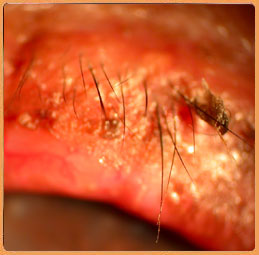- Home
- About Us
- Meet Our Team
- Facilities
- Services
- Expertise
- Anterior Lamellar Transplants
- Artificial Cornea
- Cataract Surgery In Children
- Complex Cataract Surgeries
- Corneal Infections
- Corneal Transplants In Children
- Dry Eye Disorders
- Keratoconus
- Lasik And Refractive Surgery
- Ocular Allergies
- Ocular Inflammation
- Ocular Surface Reconstruction
- Pterygium Management
- Secondary Iol Implants
- Sutureless Corneal Transplants
- Patient Information
- Academics
- Darshan Activites
- Contact Us
DRY EYE DISORDERS
Much of the comfort in our eyes results from the presence of a normal quantity of tear fluids. A healthy tear film is essential to maintain clear vision, provide protection from infections, maintain the health of the ocular surface, and provide adequate lubrication for the blinking action of the eyelids.
Unfortunately, many conditions can adversely affect the amount and quality of tears that are produced in the eye. Some of these are due to ageing and alterations in the hormonal levels in our bodies. Some are related to our work patterns and environment, as in those who constantly use computers. The most severe forms however, are often due to some underlying systemic disease.
Dry eye symptoms are varied and the complaints can range from grittiness, redness, itching, a hot feeling in the eye, tiredness, scratchiness, burning, etc. If not treated appropriately, the lack of tears can lead to infections and other changes in the health of the eye that can result in scarring and reduced vision.
Identifying the presence and extent of tear insufficiency requires the use of a series of tests. It is important to categorize the type, extent, and cause of the dry eye to ensure appropriate treatment. Blood tests and a physician’s evaluation may also be required, if an associated, underlying systemic disease is suspected.
Treatment of the milder varieties of dry eye requires the use of appropriate artificial tear drops. In moderate dry eye disease, plugs that prevent drainage of tear through the tear ducts can be helpful. In advanced disease, immunosuppressants and or surgery may be necessary to preserve or restore vision.
Dr Srinivas K Rao has a holistic approach to the management of Ocular Surface Diseases – which includes topical and systemic medical management, punctual plugs, lid margin mucus membrane grafts, lateral tarsorrhaphy, amniotic membrane and limbal stem cell transplants, and corneal replacement strategies including keratoprostheses, even for the treatment of end-stage disease.
Severe dry eye
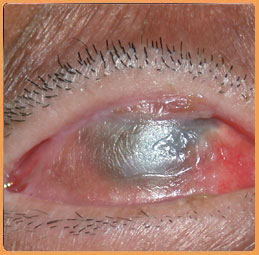
Lid changes in dry eye
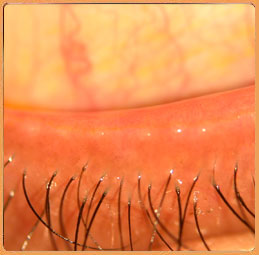
Surface Staining
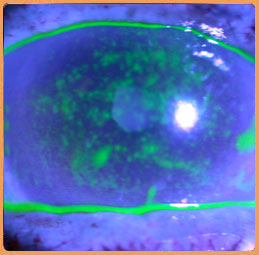
Seborrheic blepharitis
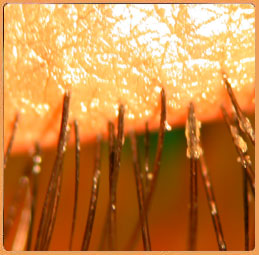
Stains for diagnosis
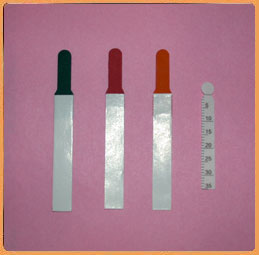
Staphyloccal blepharitis
